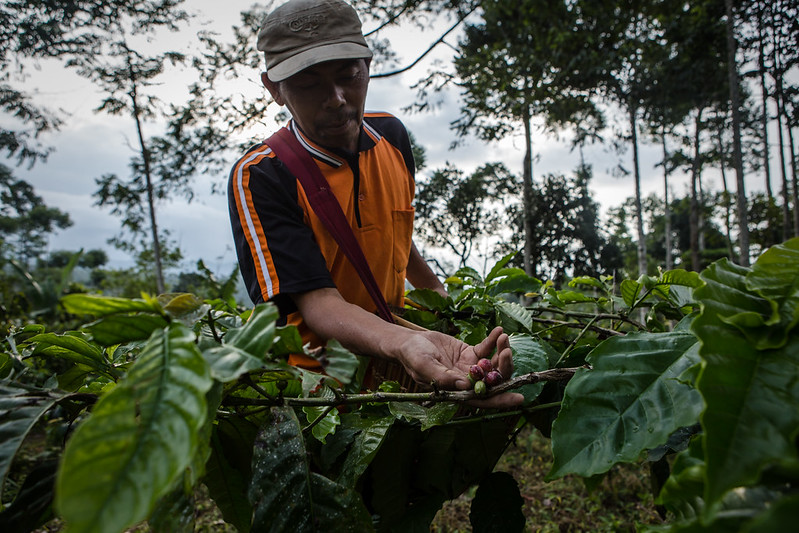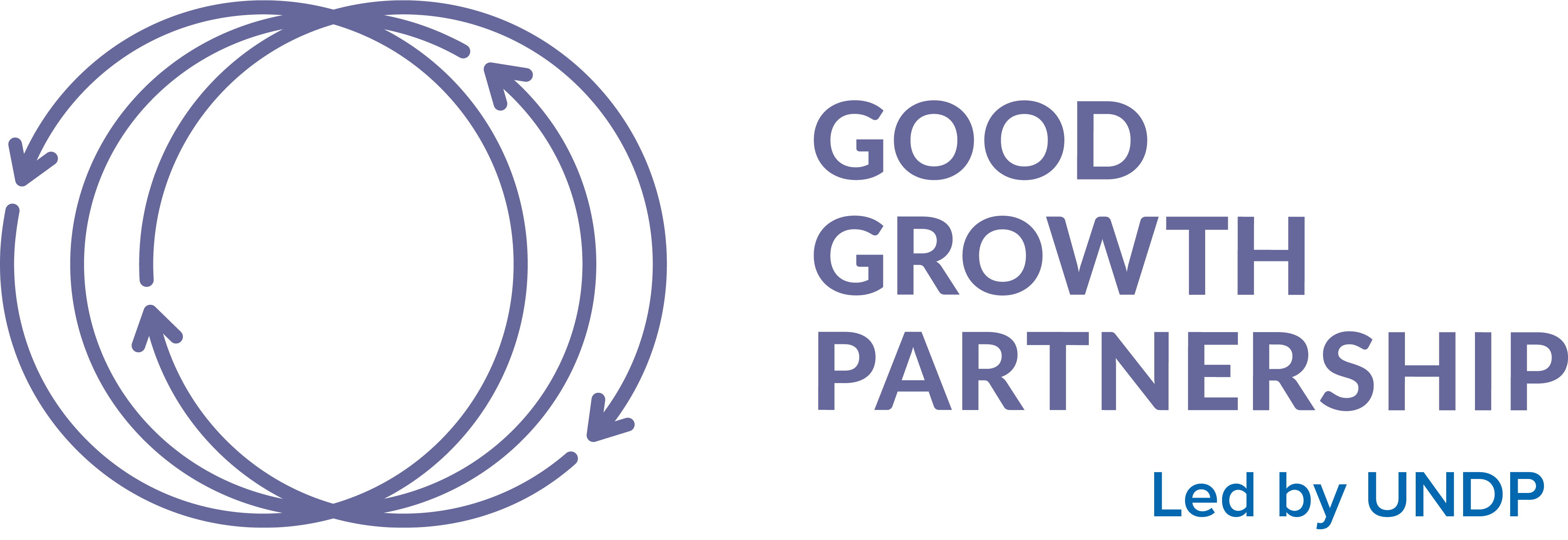
New co-leader Christopher Brett brings a deep knowledge of agribusiness and the private sector to the Food Systems, Land Use and Restoration Program (FOLUR), the largest impact program backed by the Global Environment Facility, now rolling out implementation across 27 countries. He shared his views with For the Record.
As the impact of climate change increases around the world, supporting transformations in the agricultural sector is a critical area of focus for governments and businesses seeking solutions to global warming.
After energy, agriculture produces the second highest amount of planet-warming emissions, and climate mitigation and adaptation strategies are vital to address the increasing challenges farmers face. Greenhouse gases in agriculture derive from carbon dioxide, methane and nitrous oxide, occurring partly from clearing tropical forests and other vegetation for farm and grazing lands.

In the future, farmers will not only earn income from the crops they produce but they will profit from using efficient land management strategies, which will provide better stability in crop value chains over the long term, said Christopher Brett, Lead Agribusiness Specialist at the World Bank who became co-lead of the Food Systems, Land Use and Restoration (FOLUR) Integrated Platform in July.
“Healthy, sustainable commodity value chains bring crops step-by-step systematically and with efficiency from the field through to the consumer, offering social benefits, generating profits at each stage and adhering to a positive – or neutral – impact on the environment,” said Brett, who recently took the helm at the 27-country program coordinated by the World Bank and financed by the Global Environment Facility (GEF).
FOLUR was designed to support the adoption of sustainable practices along crop value chains from production to market and share knowledge on potential solutions.
“The current trend is toward intensifying agriculture and curtailing expansion as weather becomes more erratic, Brett said. “Key ways to achieve this efficiently include factoring in better care of fields and fully integrating grazing lands into agricultural policies and business strategies.”
Q: What methods does FOLUR advise for creating more sustainable agriculture?
A: For such crops as cocoa and coffee, agroforestry techniques are recommended. This includes re-introducing other trees and shrubs to help retain organic matter in the soil, storing nutrients and reducing emissions. Trees also create the microclimate around the farm, keep the humidity and moisture in and further protect the soil. An agroforestry approach can provide the basis for sustainable finance from companies seeking to better align their investment decisions with environmental, social and governance principles. By reshaping agricultural, environmental and trade policies, governments can better support businesses that adhere to fair labor practices and create conditions that ease the way for companies seeking to apply eco-friendly research and development strategies.
Q: How can a more sustainable food system help economies?
A: Over the long term, greater environmental sustainability supported by governments can reduce extreme fluctuations in supply and demand. As we are seeing now with the war in Ukraine, agricultural value chains have been broken, traditional trade routes are disrupted, countries – particularly in the developing world -- are facing shortages while inflation worldwide is spiralling upward. We have seen in the past the dramatic impact inflationary food prices can have. The unrest of the Arab Spring in 2011, which led to the toppling of the Egyptian and Tunisian governments and demonstrations throughout North Africa and the Middle East exemplify the risks. The global shock resulting from Ukraine-related shortages have highlighted how the global flows of commodities have a huge impact on local markets. Food price volatility is also affected by the impact of long-term changes in the environment which have a persistent impact on economies, in addition to the shock of unexpected and increasingly frequent extreme weather events.
Q: What is FOLUR’s role in this?
A: Through the integrated platform, FOLUR facilitates 27 countries working with our partners at the U.N. Food and Agriculture Organization, the International Finance Corporation, the Food and Land Use Coalition and the Good Growth Partnership on a variety of agricultural projects using an integrated landscape approach. For example, through the Cocoa & Forests Initiative, a governments are working with the private sector. Ghana, Ivory Coast and 35 leading cocoa and chocolate companies are united in efforts to end deforestation and restore forest areas. In Colombia, the Cocoa, Forests & Peace initiative – another private-public collaboration – was signed by chocolate and cocoa companies to eliminate cocoa-related deforestation. Cocoa and chocolate companies are working with governments advocating reforestation because cocoa has been the driver of deforestation, so the focus is now on encouraging cocoa farmers to replant. The World Bank has really supported these initiatives through a range of project investments.
Q: What role to certification plans play?
A: Certification schemes are designed to validate sustainable handling and production of natural resources and agricultural production. They can guarantee a variety of socially progressive attributes, including Indigenous rights, worker rights, climate resilience forest conservation and restoration. They also protect smallholder farmers and ensure a bigger share of profits. For example, Rainforest Alliance says its programs involve almost a million farmers, mainly in West Africa -- where 70 percent of cocoa is grown – who participate in certification and training programs benefitting from access to new technologies and data, which help prevent child labor and deforestation.
Farmers need financial incentives to act, and some certification programs include carbon beneficiary plans, which determine the criteria under which people can access funds. Global Forest Watch and Commodity Watch can monitor changes in the landscape and keep tabs on areas where carbon sequestration capacity is changing due to land use change. Increasing land cover will generate and trigger payments, starting a cash flow for farmers. Carbon is identified through the presence of trees and organic matter in soil.
Q: Are there any challenges involved?
A: One major difficulty is the sheer number of certification programs. Although voluntary options such as Rainforest Alliance exist, some companies started their own internal schemes, which makes it difficult to track and results in a lack of capacity to standardize requirements and payments. It also makes it very difficult for farmers who want to get crops certified – because a proliferation of confusion of systems and certification “brands” make it difficult to trace a product through the marketplace.
However, supply chain and sector based Voluntary Sustainability Standards (VSS) offer a very viable option. These are market-driven mechanisms designed ensure socio-economic and environmental sustainability concerns are addressed in the production, processing and trade of agricultural and forestry commodities. They are privately, as opposed to publicly regulated and classified as voluntary because compliance is not a legal requirement for access to markets. They define sustainability requirements that value chain actors must meet including human rights, worker health and safety, land use change and food safety. Compliance verification, traceability and eco-friendly labels are also criteria.
Q: What other challenges do you see?
A: Another issue is that sometimes the economics don’t add up and private and public investments are misplaced. War will be over water not oil in the future. For example, India and the continent of Africa face ultimate water stress and face the largest population growth trends. Migration is often related to climate change and lack of water. It’s frightening to think of where we're going to be in the future. We need to produce crops more efficiently.
~ Written by Julie Mollins, published Sept. 13, 2022







